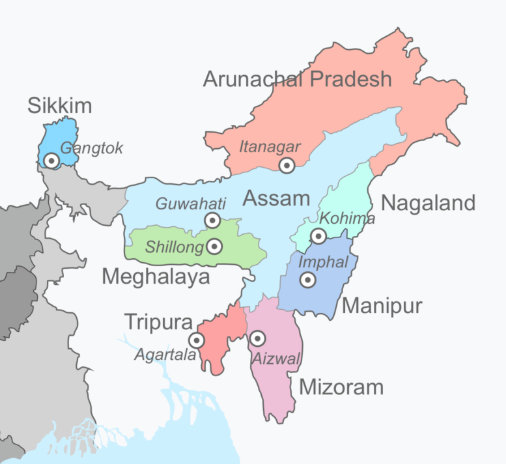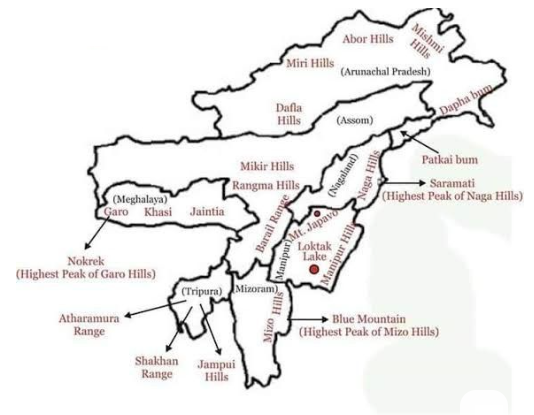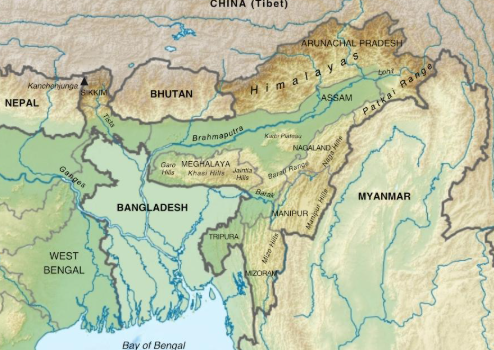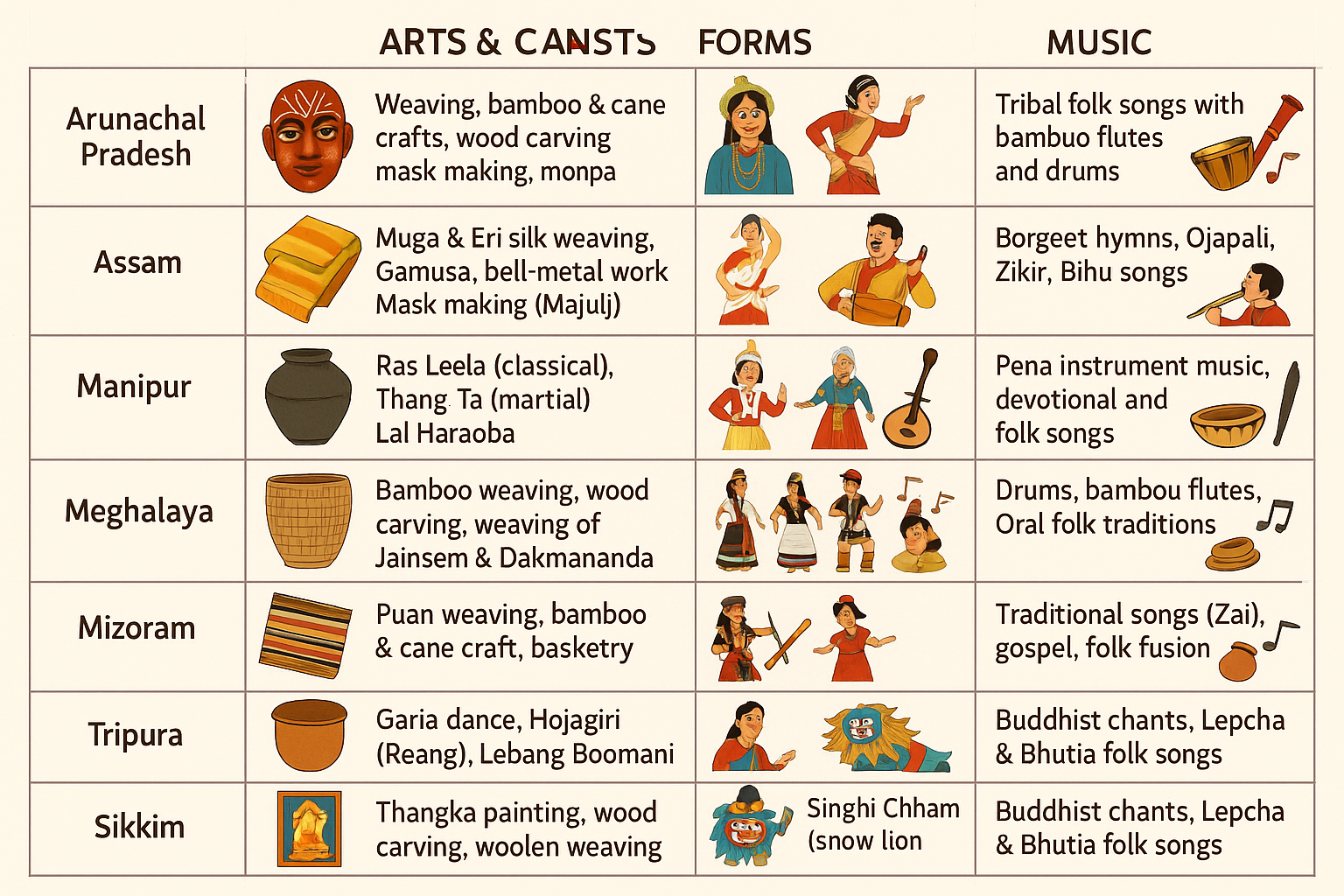7667766266
enquiry@shankarias.in
Mains Syllabus: GS III - Indian Economy and issues relating to planning, mobilization, of resources, growth, development and employment.
Rising North East summit 2025 is held recently.




|
State |
Major Tribes |
|
Arunachal Pradesh |
Nyishi, Adi, Apatani, Monpa, Mishmi, Galo, Tagin |
|
Assam |
Bodo, Mishing, Karbi, Rabha, Dimasa, Deori, Tiwa |
|
Manipur |
Tangkhul, Thadou, Paite, Hmar, Mao, Zeliangrong, Maram |
|
Meghalaya |
Khasi, Garo, Jaintia |
|
Mizoram |
Mizo (Lushai), Hmar, Lai, Mara, Chakma |
|
Nagaland |
Ao, Angami, Sumi, Lotha, Konyak, Phom, Chang, Yimchunger, Zeliang, Sangtam |
|
Tripura |
Tripuri (Debbarma, Jamatia, Reang/Bru), Chakma, Halam, Mog, Uchoi |
|
Sikkim |
Lepcha, Bhutia, Limbu |

The Hindu | North East Rising Summit